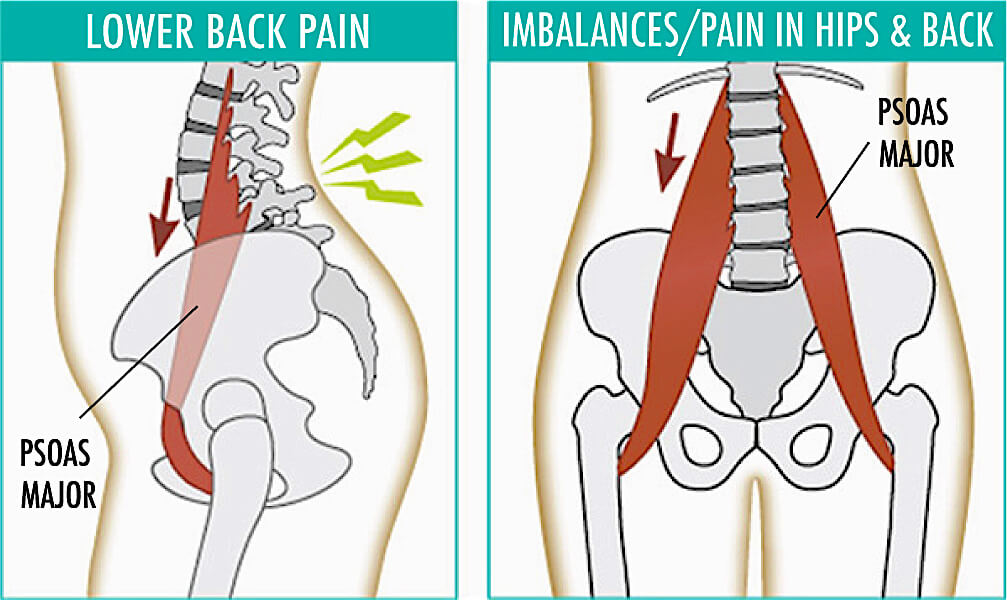How Good Is Your Psoas Muscle?

Do you know tightness in the psoas muscle can cause lower back pain?
Do you also know a tight psoas muscle can give the appearance of having a pot belly stomach that is not necessarily about being or having too much fat?
Muscles like the psoas are essential to helping us maintain a healthy spine position and healthy posture.
What Is Psoas muscle?
In your body, there are 3 significant muscles that connect your spine to your legs. These include the gluteus maximus, piriformis, and psoas muscles.
The psoas muscle attaches to the vertebrae on your lumbar spine, and then crosses the outer edge of each pubis (near your pelvis). It next joins with the iliacus muscle at your inguinal ligament (in your groin region), and finally attaches at your femur. Your iliacus and psoas muscles are together known as the iliopsoas.
The psoas muscle also plays another essential role in helping you walk. When you are walking, your brain triggers your psoas muscle to move your back leg forward—initiating the alternation between the front and back leg. So each successful step you take is thanks in part to your psoas muscle.
What Does The Psoas Muscle Do?
- Connects our upper half of our body to our lower half
- It allows us to bend our hips and legs towards the chest
- Assist in moving the leg forward when we walk or run
- Plays a key role in our centre of gravity and controlling big body movements.
- Strengthening the spine.
- They flex our torso forward when we want to bend over.
- They stabilise our torso and spine while sitting or in motion.
- They support our internal organs such as the small intestine.
The psoas muscles are not only important for our physical structure, but can even benefit our psychological well-being because of their connection to the breath. Two tendons for the diaphragm, the crura, connect to the spine alongside where the psoas muscles attach. The diaphragm and the psoas muscles are connected through fascia that also connects the other hip muscles.
These connections between the psoas muscle and the diaphragm connect your ability to walk and breathe, and even how you respond to fear and excitement because, when you’re stressed, your psoas muscle contracts. This means that our psoas muscle can have a direct influence on our fight or flight response!
An easy stretch for your psoas muscle
When you sit for extended periods of time, your psoas muscle may become tight. This, in turn, can pull your pelvis forward—which places pressure on your lumbar spinal discs. This additional pressure often results in lower back pain.
To help prevent—or treat—tightness in your psoas muscle, here is a simple stretch you can perform at home or the office:
 Tightness in the psoas muscle can cause lower
back pain.
Tightness in the psoas muscle can cause lower
back pain.
Find an area that is carpeted. If carpet is not available, you can place a cloth or towel on the ground beneath you.
Drop your right knee down beneath you, with your right leg extending away from your body and your toes touching the ground.
Place your left leg in front of you (with your foot flat on the ground), so that your left leg forms about a 90-degree angle.
Using strength from your buttock, gently drive your right knee backward and down.
While doing this, maintain good posture with your shoulders tall and head upright.
Hold this position for 30 seconds, and then repeat on the opposite leg.
The above stretch can be performed 2 to 3 times per day, and it is helpful to place yourself in front of a mirror to check for good posture.
If you suspect your psoas muscle is the cause of your lower back pain, schedule an appointment with us. We will be glad to help.

